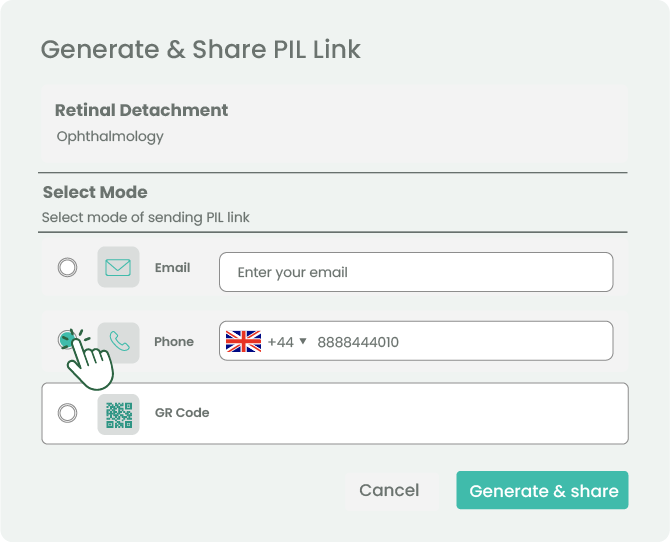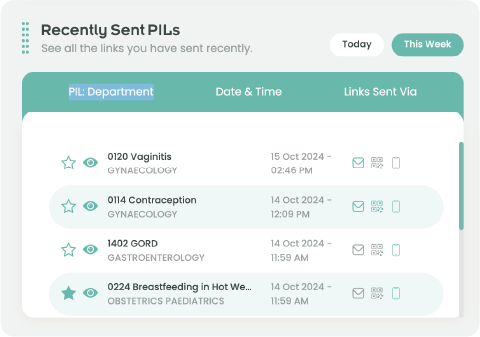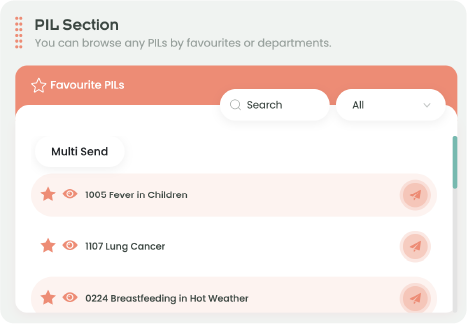In many developing regions, including the Middle East, hospitals are beginning to recognize how patient education tools improve outcomes, boost satisfaction, and raise healthcare quality standards effectively.
While patient education is established in Western countries, its adoption elsewhere is growing. This guide, built on British expertise, helps leaders select the right patient education tools.
It walks you through how to choose the right patient education tools tailored to your hospital’s unique needs and goals.
Why Patient Education Tools Are Essential in Modern Healthcare
Effective patient education is essential to:
- Empowers patients to make informed decisions about their health.
- Follow treatment plans accurately, and understand their conditions better, ultimately leading to improved healthcare experiences.
Research from countries with advanced patient education systems shows higher health literacy and patient adherence, which directly contribute to better overall health outcomes and improved healthcare efficiency globally.
By investing in high-quality patient education tools, hospitals can position themselves as leaders in patient engagement, care quality, and long-term improvements in both outcomes and patient satisfaction.
Key Factors to Consider When Selecting Patient Education Tools

User-Friendliness
Patient education tools should be easy to navigate for patients and staff. Multi-language support and intuitive design ensure accessibility where digital literacy varies significantly.
Customization and Cultural Relevance
- Adapt materials to local culture and values
- Personalize content for hospital goals and patient backgrounds
- Use patient education tips to ensure relevance and clarity
Content Quality and Accreditation
The credibility of patient education materials is essential. In the UK, patient education content often goes through rigorous quality checks and accreditation processes such as the PIF TICK to ensure accuracy and reliability.
When selecting tools for your hospital, prioritize those that offer evidence-based content and are accredited or reviewed by medical experts.
This ensures that patients receive reliable information, improving trust and adherence.
Digital Capabilities and Accessibility
In developing regions, mobile-friendly patient education tools can have a broader reach, given the high usage of smartphones.
Hospitals should choose digital patient education platform that:
- Work across devices
- Offer SMS or QR access for remote patients
- Provide offline access when internet connectivity is limited
Comparing Types of Patient Education Tools
Printed vs. Digital Tools
Printed leaflets remain useful, but digital education tools for patients deliver interactive and engaging experiences.
Many hospitals now adopt blended approaches for flexibility and patient preference
Interactive vs. Passive Content
Interactive patient education tools such as videos or quizzes actively engage patients in their care, encouraging participation and strengthening their understanding of essential medical information.
On-Site vs. Remote Access
Patient education tools that are accessible remotely extend support beyond the hospital, ensuring patients remain informed, confident, and engaged in their healthcare journey long after discharge.
Remote-access health education tools extend support beyond hospital walls, especially where follow-up visits are difficult.
Patients can access learning materials at home through mobile apps or web portals.
Evaluating and Implementing Patient Education Tools in Your Hospital
Selecting the right tools is just the beginning; evaluating and implementing them effectively is equally important.
Here’s a checklist to guide your hospital through this process:
Compatibility with Existing Systems
Ensure that the tools integrate smoothly with your hospital’s EMR or patient portal, reducing duplication and streamlining access.
Cost-Effectiveness and ROI
Consider the long-term benefits of patient education, including reduced readmission rates and increased patient satisfaction, which can improve your hospital’s reputation and financial standing.
Data Privacy and Security
Data privacy regulations, including GDPR compliance in the UK, are essential considerations. Patient education tools must meet local and international standards to safeguard patient data effectively.
Conducting pilot testing and collecting feedback from both patients and healthcare providers ensures chosen tools meet their intended purpose, improving usability and healthcare outcomes significantly.
Starting with a small-scale implementation provides valuable insights, allowing hospitals to refine strategies before launching a comprehensive patient education program across all departments and patient populations.
Conclusion
For healthcare leaders in developing regions, adopting patient education tools improves care quality, empowers patients, and builds hospital reputation by aligning solutions with cultural and institutional needs.
Start exploring patient education solutions today to set your hospital apart as a leader in patient care, staff efficiency, and long-term patient engagement.






